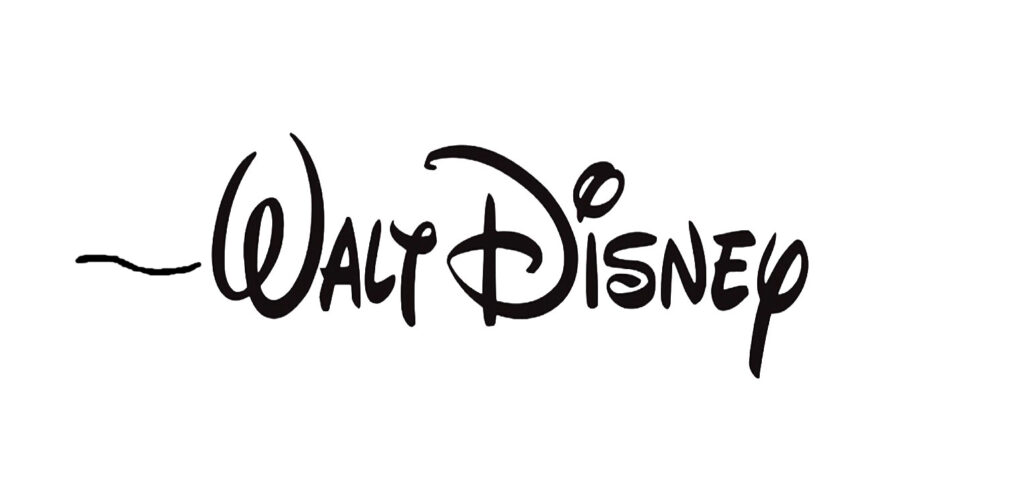MINING AND MARCHING HOME
After that blackout on Snow White and critters cleaning the cottage, Churchill’s glorious music punctuated with melodic clinking introduces the dwarfs’ song. The film employs effectively what is called in cinematic parlance a “telescoping wipe”, in this case brilliantly modified: the back end of a mining cart obscures the entire screen and then diminishes in size as it pulls away from the camera along its tracks into the cavern, quickly revealing around its receding edges the setting into which it is traveling. This is the dwarfs’ mine where four of them are singing as they busily hack away at the boulders with their pickaxes in order to loosen an assortment of twinkling gems. This mine itself is no ordinary dingey shaft either: the whole cave sparkles magnificently, embedded with copious gems, not rough ones but already faceted – cut and polished, just waiting to get pried loose out of the rock. The shaft itself – like Snow White’s wishing well – joins the song, magically echoing the final rhyme of the dwarfs’ chorus.

This short sequence offers an overview – a sort of group introduction – of the seven little men without naming any of them. The four at work with their pick axes are shown singing in brief close-ups. Three others get special attention. Sleepy, who drives the cart, swats at his ever-present fly, accidentally whipping the deer harnessed to pull the cart. The buck starts bucking, jogging him awake violently. Doc examines one of the harvested jewels, tapping it with a small hammer thus producing a pleasant “ding”. He tosses it into a “keepers” bin and selects another. Same routine again, but this gem returns a “clunk” instead of a “ding” and so he discards it. Dopey sweeps up the rejects into a dustpan and casually tosses them off the edge of a ravine then returns to Doc’s side where he observes his “mentor” assessing another jewel this time through a magnifying lens squinted in his right eye. Imitating Doc, Dopey lodges a diamond in each of his own eyes, their facets comically multiplying his eyeballs, and wiggles his ears. Not amused, Doc knocks him on his head to dislodge the jewels. Thus already has Dopey endeared himself as an audience favorite!

Cut to the image of the dwarfs’ clock built into the trunk of a tree as its minute hand ticks forward to straight-up. Two miniature automaton miners emerge out of doors left and right and chime the hour – five o’clock – by alternately striking a tiny anvil with their little pickaxes [anticipating the marvelous clock sequence in Disney’s next masterpiece Pinocchio]. Churchill’s music has paused for this sound effect and now Doc hollers a melodic “heigh-ho!” which elicits a responding “heigh-ho” from the others in the mine and the film’s next song ensues, “Heigh-ho It’s Home from Work We Go!”, which is the total extent of its lyric. Interesting to note: out of the film’s eight songs, three concern labor in one way or another, included in a movie that was produced during the darkest days of the 1930s’ Great Depression.
Emerging out of the darkness of their mine and lead by Grumpy the dwarfs start their evening march homebound, pickaxes slung over their shoulders. Doc stows away a big sack full of the days’ take in jewels, tossing it into a sturdy vault. Dopey follows suit with a second sackful, but he forgets to let go of it and flings himself into the vault along with it. He emerges immediately, slams the door, locks it with a big key, starts off still holding the key, notices it in his hand, returns and hangs it on a stub next to the door. Animator Shamus Culhane (1908-1996) and his assistants worked for six months on the dwarfs’ march home, a scene that lasts approximately a minute-and-a-half. In one of the film’s most magnificent images gigantic shadows of the marching dwarfs are cast by the sunset against the side of a high cliff as the parade rounds a corner through the forest and then proceeds across an immense log fallen across a ravine, a glorious waterfall spilling into the chasm.

Doc has taken over the lead and Dopey brings up the rear adorably hitch-stepping in his attempt to the keep in step with the others as they march off into the distance singing all along the way. Dopey’s special movement was distinctively incorporated by animator Frank Thomas into one of the character’s later scenes.
Walt saw this action in sweatbox and was so delighted with it that he decided to use it throughout the picture. Soon a host of Dopey scenes, already animated, were recalled so their respective animators could add the hitch step.[1]
[1] Kaufmn, J.B.: The Fairest One of All, The Walt Disney Family Association Press, San Francisco, CA, 2012, p. 73.
